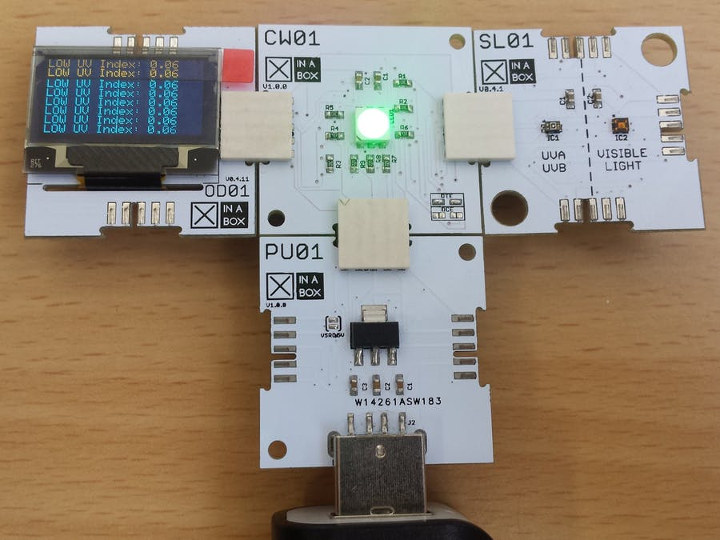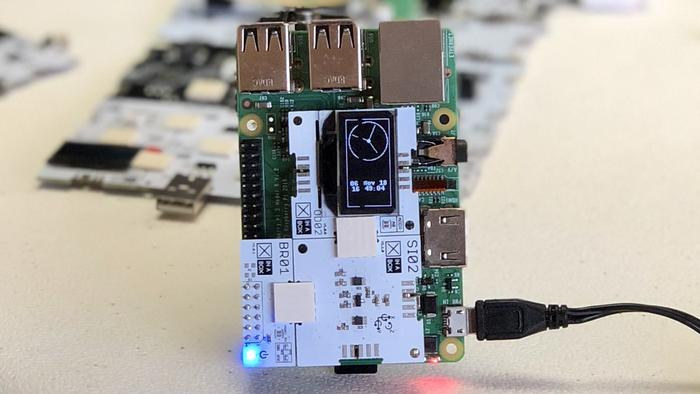So today, I decided to have a look a 96Boards website to see if there was anything new from the community, and I came accross “X in a Box B901“, an “CHIP is designed to interface with the 96 Boards, such as the Dragonboard 410c. This provides an interface to support the CHIP ecosystem, adding support for many additional sensors etc…” I had no idea what it was all about, so obviously I had to investigate.
Xinabox (X in a Box) is an ecosystem of modular electronics boards used for developing, making products and learning. There are now over 70 modular xChip” with cores/CPUs, sensors, power, communication, output, and storage. They are interconnected together without wires, soldering, breadboards, and adapters are provided for Raspberry Pi, 96Boards, and other development boards.

xChips can be sorted into 8 categories:
- Cores – MCU/CPI cores based on Microchip ATMega328P, SAMD21, ESP8266, or ESP32 with or without a LoRa radio
- Bridges – Used to connect xCHIPS to popular boards include various Raspberry Pi boards, Micro::Bit, Minnowboard, BeagleBone Black, and 96Boards family of SBCs.
- Sensors – Alcohol gas sensor, VOC & eCO2, particle sensor, capacitive touch, IMU 9DoF, UVA/UVA/Light sensor, IR temperature, GNSS/GPS, and many more.
- Power – Dual AA batteries, coin battery, 5-24V power supply, LiPo battery power supply, USB and micro USB power.
- Interfaces – Programming interfaces (SUB, JTAG/SWD), and UART to xBUS, SPI to xBUS, xBUS to xPDI
- Auxiliary – Misc boards with hardware encryption, I2C multiplexer, I2C extender or 1 Mbit memory
- Output – High current DC switch, relay out, servo driver, stepper driver, and OLED display
- Accessories – Pack of xBUS connectors, packs of xPDI interface, and some blank xChips
The 10-pin xBUS is comprised of I2C, UART, and power signals, while the 6-pin xPDI interface (Program and Debugging Interface) comes with USB and SWD signals and is used to program xCHIP cores. The best way to understand how modules fit together is to watch the short introduction video embedded below.
xChip Core boards can be programmed with the Arduino IDE, but when used with other boards, tools for Windows 10 IoT compatible boards, BBC Micro::bit, or Raspberry Pi. Some of the xChips are also supported by Zerynth Middleware for IoT based on Python and optimized for microcontrollers.
While you could also purchase xChips modules separately, especially if you already own a supported development board, the easiest way to get started is likely to buy one of their kits starting at $90, follow their guides, and has a look at some of the existing projects.


Jean-Luc started CNX Software in 2010 as a part-time endeavor, before quitting his job as a software engineering manager, and starting to write daily news, and reviews full time later in 2011.
Support CNX Software! Donate via cryptocurrencies, become a Patron on Patreon, or purchase goods on Amazon or Aliexpress




